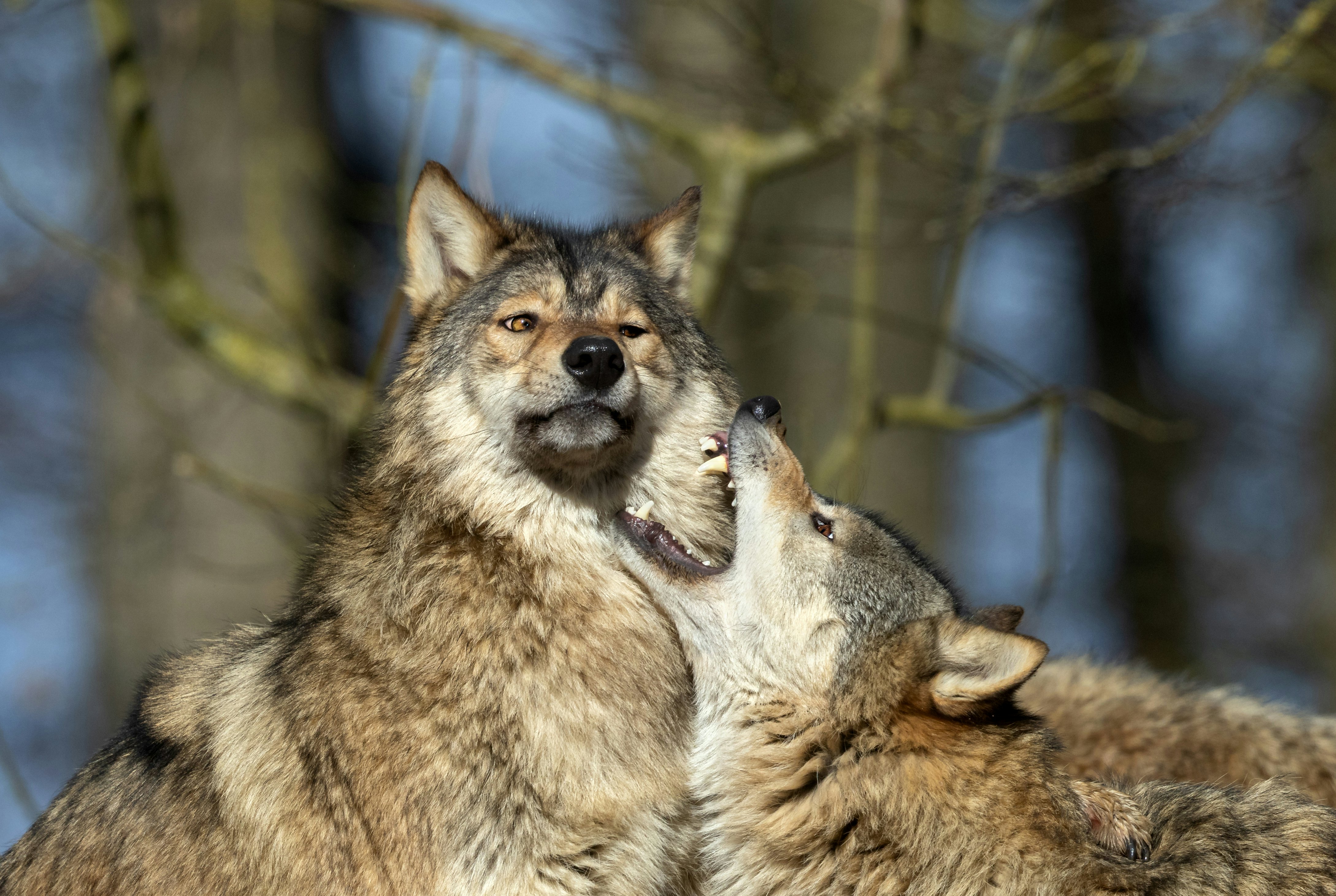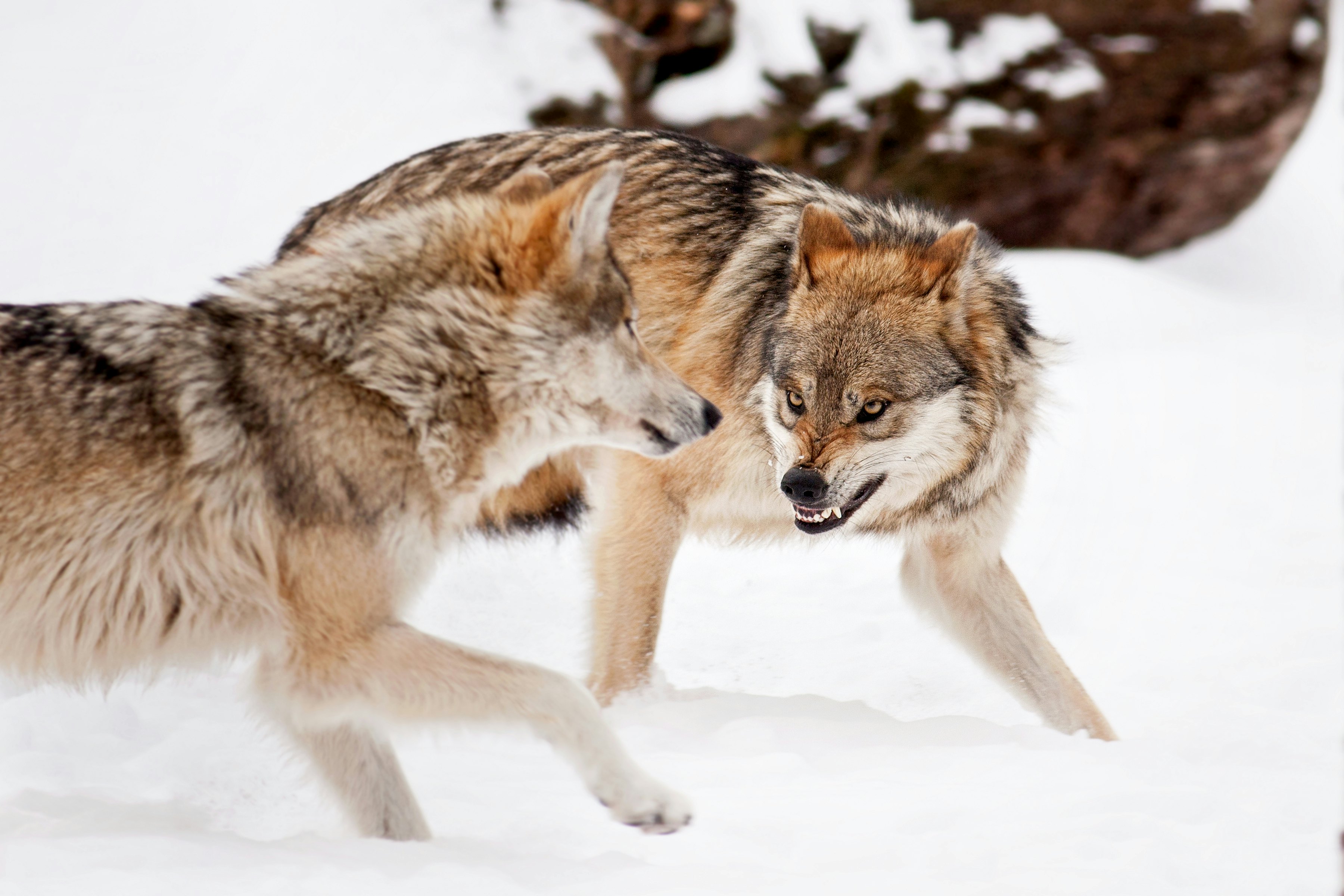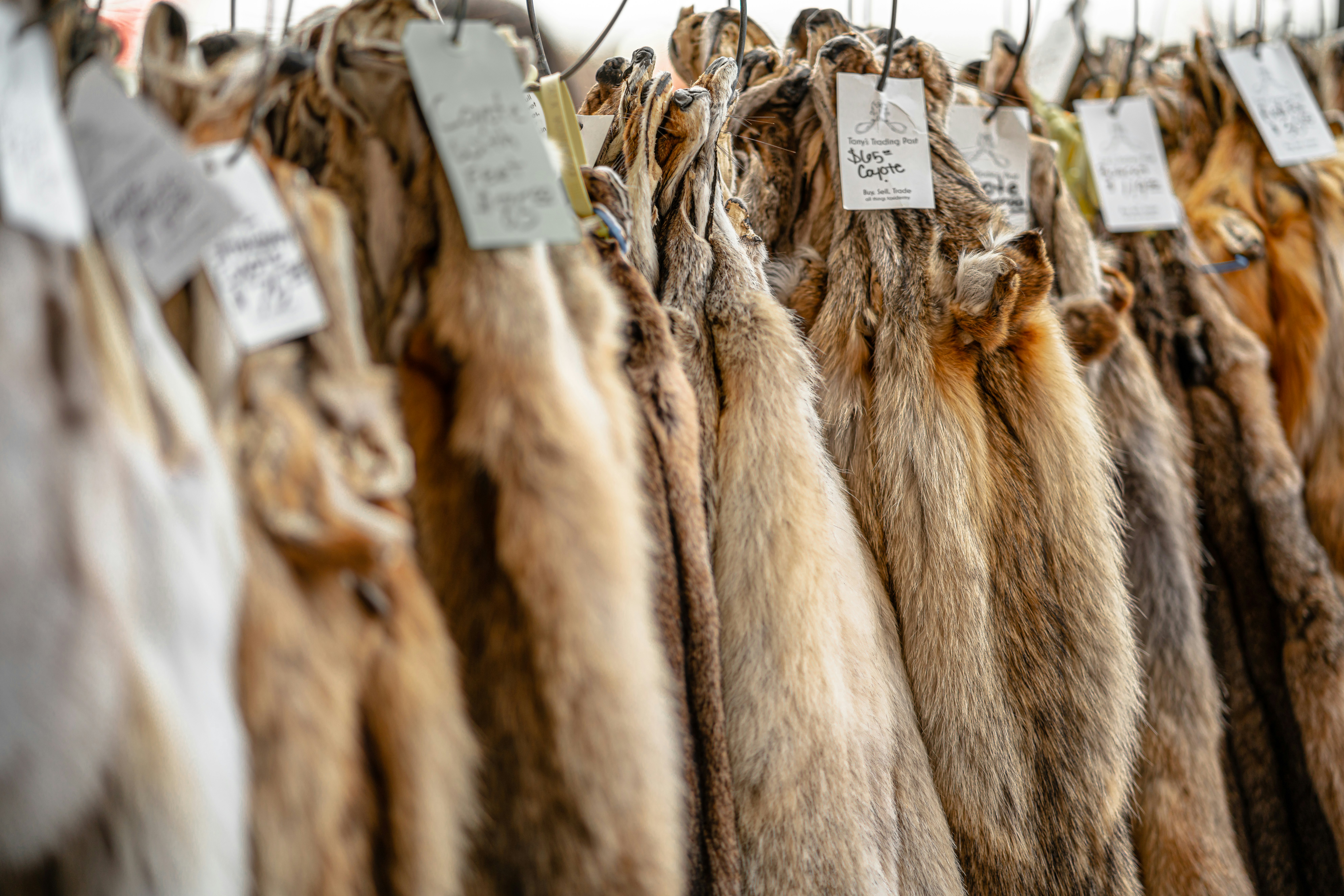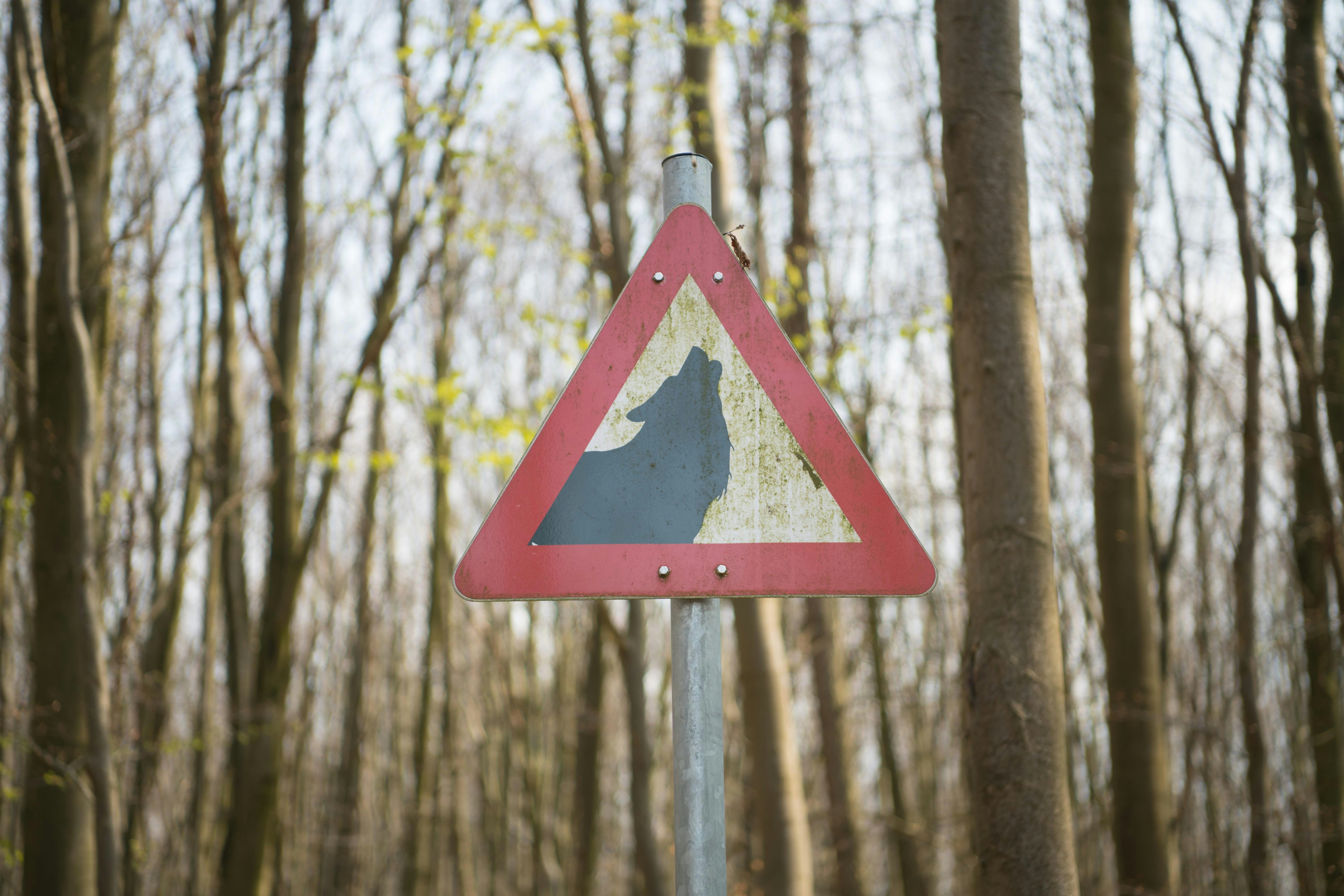
Maybe it was the heat that afternoon in Madison, or maybe it was sheer exhaustion as the meeting approached its sixth hour. Either way, tempers were flaring.
The Wisconsin Natural Resources Board, a politically appointed body that advises the state’s natural resources agency, met on Aug. 11, 2021, to debate a seemingly narrow question: How many wolves should hunters be allowed to kill during the upcoming hunting season?
Should the quota be 130 as the state’s Department of Natural Resources recommended, a conservative approach on the heels of an unusual late-winter hunt that February? Or should it be higher to get the wolf population closer to 350, the objective enshrined in the state’s wolf management plan?
The underlying questions, though, were: How would that number be determined? And who gets to decide?
Wolves have been enmeshed in broader political fights roiling Wisconsin for almost 20 years since the number of wolves surpassed the state’s population objective for the first time in decades. That fight exploded again in the waning days of the Trump administration when the U.S. Fish and Wildlife Service removed almost all gray wolves in the lower-48 from the Endangered Species List. Without federal protections, wolves fell back under state management, into the hands of the DNR and the Natural Resources Board.
The August meeting in Madison looked like any other bureaucratic event on the surface. Agency staff waited to be questioned, documents piled high on their laps. Board members sat around a U-shaped table, a jungle of wires at their feet connected to TVs for telecasting. They were there in part to debate the DNR’s recommendations for the upcoming hunting season. But the official recommendations — based on the work of DNR biologists — quickly got lost, and suggestions for the number of wolves to kill in the next hunt varied from zero all the way to 500.
Nearly all the participants claimed to have science on their side — a trend reflected in the broader Wisconsin wolf debate. But cultural values and politics run deep in wildlife management, and everyone seems to be looking for easy answers from science that’s far from settled.
The debate on that August day was heated. “Kaz, you’re manipulating the number using the tribal declaration. On its face, it’s damn near illegal,” an exacerbated Preston Cole, the DNR secretary, nearly shouted to board member Greg Kazmierski as the latter pushed for a hunting quota well above the DNR recommendation. Kazmierski, in turn, accused the DNR of spreading misinformation.

Debate routinely circled back to the population objective and the right number of wolves for Wisconsin, with most participants using ecology and other scientific arguments to defend their stance.
“People keep bringing it up like 350 is the magic number,” argued board member Marcy West. “It’s not.”
In the end, the high-quota advocates won the day. But it was moot.
In an unprecedented move, the DNR rejected the board’s vote, and, in October, a circuit court judge issued an injunction against the next hunt until the DNR updated the wolf management plan. Then, this past February, a federal judge ruled that the Fish and Wildlife Service has not followed the “best available science” in delisting wolves, restoring federal protections to all wolves outside of the Northern Rockies.
Wolves and the endangered species debate
Though wolves around the Great Lakes are back on the Endangered Species List, for now, the larger war still rages.
Today, there are roughly 6,000 gray wolves in the continental United States, a stunning comeback for a species that was all but wiped out 50 years ago. As the population has grown, though, attitudes have diverged. There are hunters who view wolf hunting as a right; farmers who fear for their livelihoods; environmentalists who see wolves as a symbol of wilderness; tribal communities who view them as a spiritual relative; and countless positions in between.
Conflicting values, meanwhile, have politicized wolf recovery. When Idaho passed an aggressive wolf hunting law in 2021, a biologist described it as “retribution” against liberals. Misinformation can also run rampant. When wolves wandered back into California 10 years ago, state employees reported being accused of actively importing them.
Debate routinely circled back to the population objective and the right number of wolves for Wisconsin, with most participants using ecology and other scientific arguments to defend their stance.
Wolves were one of the first species protected under the Endangered Species Act, and they’ve bounced on and off the list ever since with each policy change fomenting political conflict. The question of whether wolves are recovered is hotly contested because recovery can be as much a moral and political issue as a scientific one.
“Science doesn’t often times answer the ethical questions very well,” said Peter David, a wildlife biologist retired from the Great Lakes Indian Fish and Wildlife Commission.
Adrian Treves, a professor of environmental studies at the University of Wisconsin-Madison, commented on the Wisconsin wolf debate more pointedly. “My view is that all sides on this issue would like to wrap their value judgments, that are not scientific, in science, claiming they have evidence for their view,” he said.
Treves has argued that ignoring how values come into play in wolf management can distort science, and other researchers have pointed out that, while science can quantify population trends and the extinction risk for a species, it’s largely a value call as to what’s an acceptable risk.
For example, wolves have thrived in the Great Lakes region, where they number close to 4,000. However, the Endangered Species Act declares that a species should be listed if it’s threatened in “all or a significant portion of its range.” Wolves once roamed much of the country, but today occupy about 10 percent of their historic range.
A recent study published in BioScience challenged the proposition that recovery in a single region — like the Great Lakes — constitutes recovery of the entire species. The researchers pointed out that populations are stable in only a handful of the states that still have large swaths of suitable habitat. The judge that restored protections early this year similarly criticized the Fish and Wildlife Service for not considering the threats wolves face outside of core populations like the Great Lakes.
Treves has argued that ignoring how values come into play in wolf management can distort science, and other researchers have pointed out that, while science can quantify population trends and the extinction risk for a species, it’s largely a value call as to what’s an acceptable risk.
Given this complexity, Minnesota and Michigan decided to hold off on hunting after the recent delisting and first revise their wolf management plans. “They’re taking a measured and intelligent response,” said David of the approach, contrasting those states to Wisconsin, where a 2012 law mandates a hunting season whenever the species is not federally protected.
Hunters balked when Wisconsin’s DNR announced that they too would wait on a hunt until the traditional start of the season later in the year. A pro-hunting organization, Hunter Nation, sued, arguing that the delay violated the 2012 law and infringed upon their right to hunt, which is protected under the state constitution. The court sided with them.

Wolves and indigenous Americans
On Feb. 22, 2021, a hunting season opened with a quota of 200 wolves. The Ojibwe — also known as Chippewa, and the largest tribe living around the Great Lakes in both Canada and the U.S. — claimed a portion of that quota guaranteed by treaty rights, with no intention of killing any wolves. That left 119 wolves for state-licensed hunters. Within three days, they killed 218.
The February hunt seemed to hang over nearly every public comment at the August meeting. Most agreed that the DNR-recommended quota for the next season, scheduled to begin in November, was inadequate. For some, it was too high to protect a species they say is at risk. For others, it was too low to manage a species they say threatens livestock, pets, and children.
Up first was John Johnson Sr., chairman of the Lac du Flambeau Band of Ojibwe, who described the spiritual connection his people have with Ma’iingan, as the Ojibwe call the wolf. Wolves are central to the tribe’s creation story. The Red Lake Band of Chippewa have declared their land in Minnesota a wolf sanctuary, and Ojibwe groups have argued that delisting wolves is a violation of their right to freedom of religion.
The tribes claim that the quota’s overshoot in February was a violation of treaty rights and a form of discrimination. The environmental organization Earthjustice filed a lawsuit to that effect on their behalf.
Most agreed that the DNR-recommended quota for the next season, scheduled to begin in November, was inadequate. For some, it was too high to protect a species they say is at risk. For others, it was too low to manage a species they say threatens livestock, pets, and children.
In Johnson’s public comment, he conceded that many would discard his cultural opposition to wolf hunting, and he focused much of his testimony on the ecological impacts of holding two hunts in a single year. Previous treaty rights cases have established that wildlife management in ceded territory needs to be “based on sound biological principles.” The tribe’s lawsuit alleges that the state failed to meet that requirement by, for example, allowing “highly efficient methods of taking” like hunting with dogs.
One of the main issues, tribal leaders say, is the disregard for cultural arguments. “People sort of poopoo the tribal experience,” said David, who is White but has worked for the tribes most of his career. “They say, ‘that’s just a cultural thing. That’s not based in science.’”
David also pointed out that arguments for wolf hunting are themselves cultural. “We somehow think that our Western culture is all steeped in science, when in fact, there are all kinds of mythology,” he said. “They don’t see that this vengeance that many people hold towards wolves is just a cultural thing too.”
But Luke Hilgemann, the CEO of Hunter Nation, said that he believes wolves pose a genuine threat to lives and livelihoods in Wisconsin. Though there are no documented attacks in Wisconsin against people, Hilgemann points out that there has been intensifying conflict between wolves and domestic animals. In 2021, the state reported 78 confirmed or probable wolf attacks on livestock and pets. He says he was so frustrated by the DNR’s initial decision to delay the hunting season after the wolves were delisted that he personally joined the Hunter Nation lawsuit as a plaintiff last winter.
Hilgemann considers the February hunt a resounding success. “Based on the department’s best science, they said 200 animals was the number that should be killed,” said Hilgemann. “Anytime that we’re 10 percent or less over the quota, in any other species that are hunted here in Wisconsin, the department comes out and trumpets the success of the season. But unfortunately, that didn’t happen with the wolf.”
He’s alluding to one of the debate’s more intractable disagreements: Was the February hunt a mere 9 percent over quota (assuming an official cap of 200)? Or was it a whopping 80 percent over (accounting for the tribal allocation)? For him, the answer is obvious.
(Hilgemann also believes that the DNR is severely undercounting wolves, and suggests that there are more like 5,000 wolves in Wisconsin alone, rather than the DNR’s estimate of roughly 1,100. Like other advocates who say the wolves are undercounted, Hilgemann did not provide evidence to support the claim.)
During the August meeting, Hilgemann provided his comments via Zoom with an American flag and a mounted deer on the wall behind him. He requested a quota of 420 wolves to be hunted the next season and devoted most of his time to call out what he saw as a “power grab” by the DNR, the administration of Gov. Tony Evers, and their “friends in the media.”
On the other side of the debate was Collette Adkins, a lawyer for the Center for Biological Diversity. At the August meeting, Adkins made clear that, like Hilgemann, she wasn’t satisfied with the DNR’s recommended quota, and didn’t trust their population estimate. But, while Hilgemann said the DNR’s recommendation was too low, Adkins said it was “reckless.” While Hilgemann thought the DNR has undercounted the population, Adkins said they overcounted. And while Hilgemann thinks that the DNR’s decisions are influenced by “anti-hunting forces,” Adkins says the agency is overly deferential to “anti-wolf voices.”
Adkins, who serves on the wolf advisory committee in her home state of Minnesota, is squarely in the 80-percent-over-quota camp when it comes to the February hunt. “What was particularly awful about this winter hunt is that’s the time when wolves are just beginning their breeding season, so they’re vulnerable,” said Adkins in a later interview with Undark. “The wolves just never stood a chance.”
This political back and forth can have real consequences for wolves, and the uncertainty is unlikely to end soon. Last year was the fourth time in just 15 years that wolves in the Great Lakes were delisted, only to have a judge restore protections soon after. A 2015 study by University of Wisconsin researchers found that these kinds of swings in legal status for the animals have led to inconsistent management and declining public support for wolves.
Treves, the environmental studies professor, also studies the impacts of political decisions on wolves. He’s a vocal critic of conventional wisdom approaches to wolf management. “I have a long litany of common-sense things that turned out to be wrong,” he said.

For example, contrary to the assumption that legalizing hunting discourages poaching, Treves and his colleagues have published several studies that suggest that poaching increases when federal protections are removed, possibly, he argues because it sends a signal to “would-be poachers” that wolves aren’t valued or that the poachers won’t be punished. Last summer, they published a study estimating that 100 additional Wisconsin wolves were poached in the months following the delisting decision, compared with years in which they were protected.
“We somehow think that our Western culture is all steeped in science, when in fact, there’s all kinds of mythology,” David said. “They don’t see that this vengeance that many people hold towards wolves is just a cultural thing too.”
The effect of hunting on poaching is one of several unsettled, often oversimplified, scientific questions. Another is the impact of wolves on deer. There’s some evidence that wolves, by targeting the weakest in the herd, might help control outbreaks of a contagious, incurable, and fatal neurological condition called chronic wasting disease. That work, though, is still in the early days. Some hunters, meanwhile, claim conversely that wolves are bad for deer hunting, but David, the retired biologist, said that’s unlikely.
“It’s really a fallacy that somehow wolves are driving the number on the landscape,” he said. “Somehow humans can kill 10,000 deer in an area, and the deer are going to come right back, but when a wolf kills them there’s no compensation for that.”
Another complicated question is the ecological value of wolves. A 2013 study on wolf recolonization in Wisconsin found evidence of a so-called trophic cascade in which wolves, by managing the deer herds, were preventing overgrazing, in turn benefiting the entire ecosystem. Ecologists, though, still debate the extent to which wolves can restore ecosystems after decades of absence.
The loss of scientific nuance in policy debates, both Treves and David said, comes from a lack of transparency.
David explained that the DNR’s wolf advisory committee used to comprise two entities, one for stakeholders and one for scientists. “It was a clear two-step process, and you could see where the decision is being made,” David said. “Now when something comes out of that committee, the sausage is already made, and you don’t know the quality of the ingredients that went into it.”
That lack of transparency, said Treves, is also evident in the state’s wolf management plan, the source of the contested population objective of 350. In the August meeting, board members, public participants, and DNR staff went back and forth as to whether that objective is a floor or a ceiling on the number of wolves that should live in Wisconsin. Some stressed that it’s a minimum and advocated keeping the population stable. Others argued that it’s a cap, a goal to work down to — hence their push to hunt beyond the status quo recommendation. (After the recent relisting decision, the DNR announced that they will continue to revise the plan to try and avoid this confusion in the future.)
David, who was on the committee that helped draft the original plan in the 1990s, is adamant that the population objective was never a target number of wolves, but a threshold above which hunting could be considered. He added that the objective was also never even objective, describing the decision to go with 350 as “arbitrary.” It was, he explains, a compromise between how many wolves the landscape could support, the minimum level necessary to keep the population going, and the number of wolves that could be, in the language of the plan, “socially tolerated.”
To calculate the social tolerance for wolves, the DNR surveyed less than 1,400 people, asking how they felt about a management goal of 350. Only 16 percent said it felt “about right.” And at the August meeting, both the DNR and board gave little lip service to this human element of the equation, with most parties instead of focusing on the biological and environmental implications of the objective wolf population.
“It was a political tradeoff,” said David, about the wolf population objective. “Yet, people don’t understand that. They think it’s all science.”
This article was originally published on Undark by Leah Campbell. Read the original article here.







